-
Research article
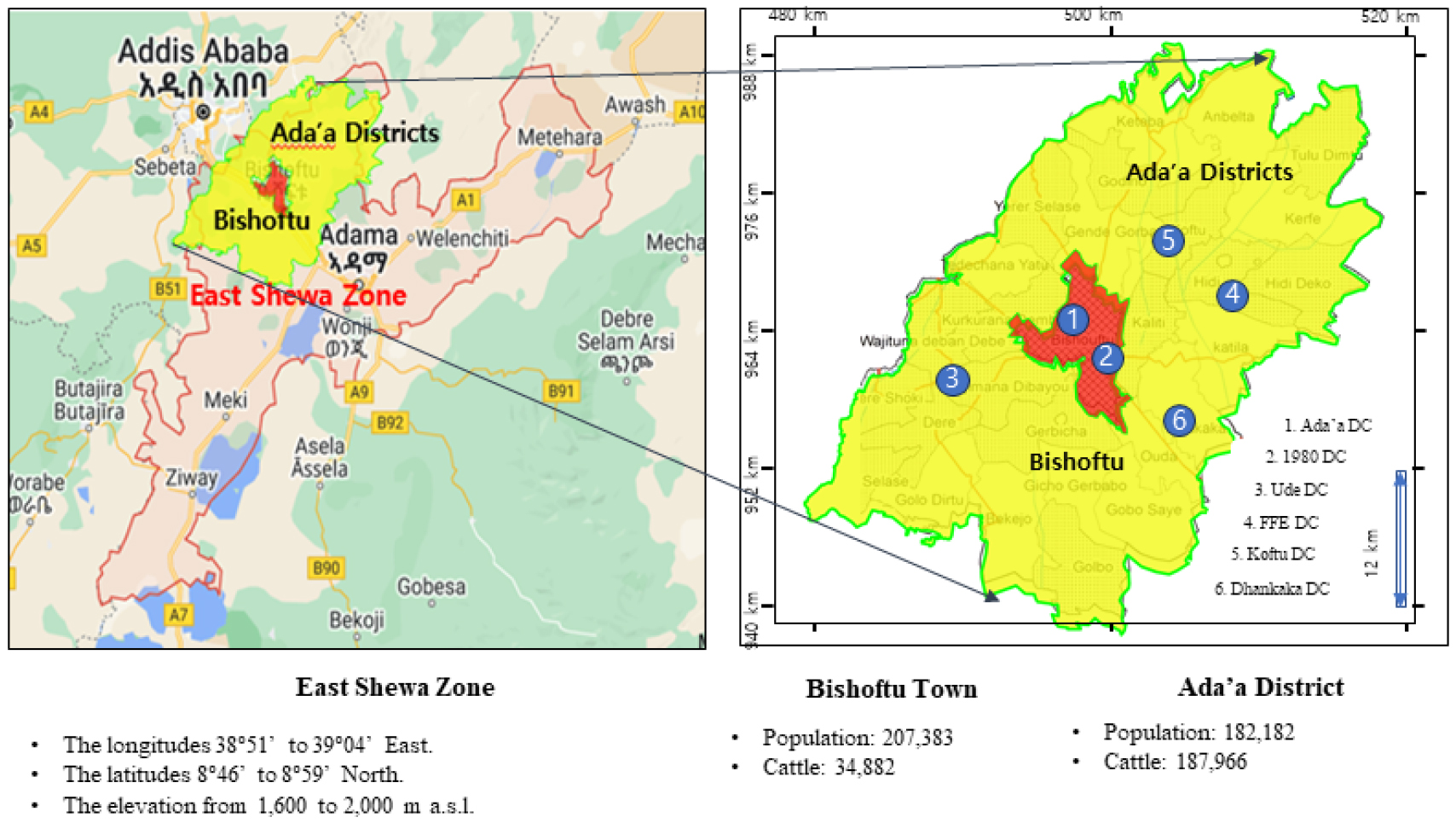
-
A study on GHG emission mitigation scenarios for dairy farm in Ethiopia
에티오피아 착유 목장의 온실가스 배출 저감 시나리오 연구
-
Hanna Park, Seongyeon Park, Abera Jabessa Fufa
박한나, 박성연, 푸파아베라 자베사
- This study aimed to explore greenhouse gas (GHG) emission mitigation by introducing improved dairy cattle genetic resources to Ethiopian dairy farmers. In …
- This study aimed to explore greenhouse gas (GHG) emission mitigation by introducing improved dairy cattle genetic resources to Ethiopian dairy farmers. In Scenario 1, genetic improvement reduced the number of indigenous cattle from 12,406 to 11,402 head, while crossbred cattle increased from 1,196 to 8,474 head and exotic cattle from 222 to 973 head. CH4 emissions from indigenous cattle decreased by 84.6% relative to the baseline, but emissions from crossbred and exotic cattle increased by 52.42% and 60.08%, respectively, resulting in an overall CH4 reduction of only 75.50%. The total number of milking cows increased from 6,454 to 14,437 head, causing GHG emissions to rise by 151.53%. Meanwhile, male cattle numbers decreased from 3,603 to 625 head, leading to a 91.35% reduction in GHG emissions. However, an increase in heifers and calves caused overall GHG emissions to rise by 109.78% compared to the baseline. In Scenario 2, off-take practices reduced the indigenous cattle population from 11,402 to 1,583 head while maintaining crossbred and exotic cow populations at 8,474 and 973 head, respectively. Enteric CH4 emissions from indigenous cattle decreased by 92.52% relative to the baseline, while emissions from crossbred and exotic cattle were reduced by 70.39% and 17.48%, respectively, resulting in an overall GHG emission reduction of 90.82%. The number of milking cows decreased significantly to 5,546 head, which increased GHG emissions by 21.12%, but a further reduction of male cattle from 625 to 486 head decreased emissions by 95.82%. Despite these changes, increases in heifers and calves caused the overall GHG emissions to rise by only 1.01% compared to the baseline. The high emission factor (EF) of exotic dairy cows and the extensive adoption of the AI breeding system highlight the importance of efficient population size (Ne) and mitigating inbreeding (Δf) risks, aligning with sustainable practices for effective GHG emission reductions. - COLLAPSE
-
A study on GHG emission mitigation scenarios for dairy farm in Ethiopia
-
Research article
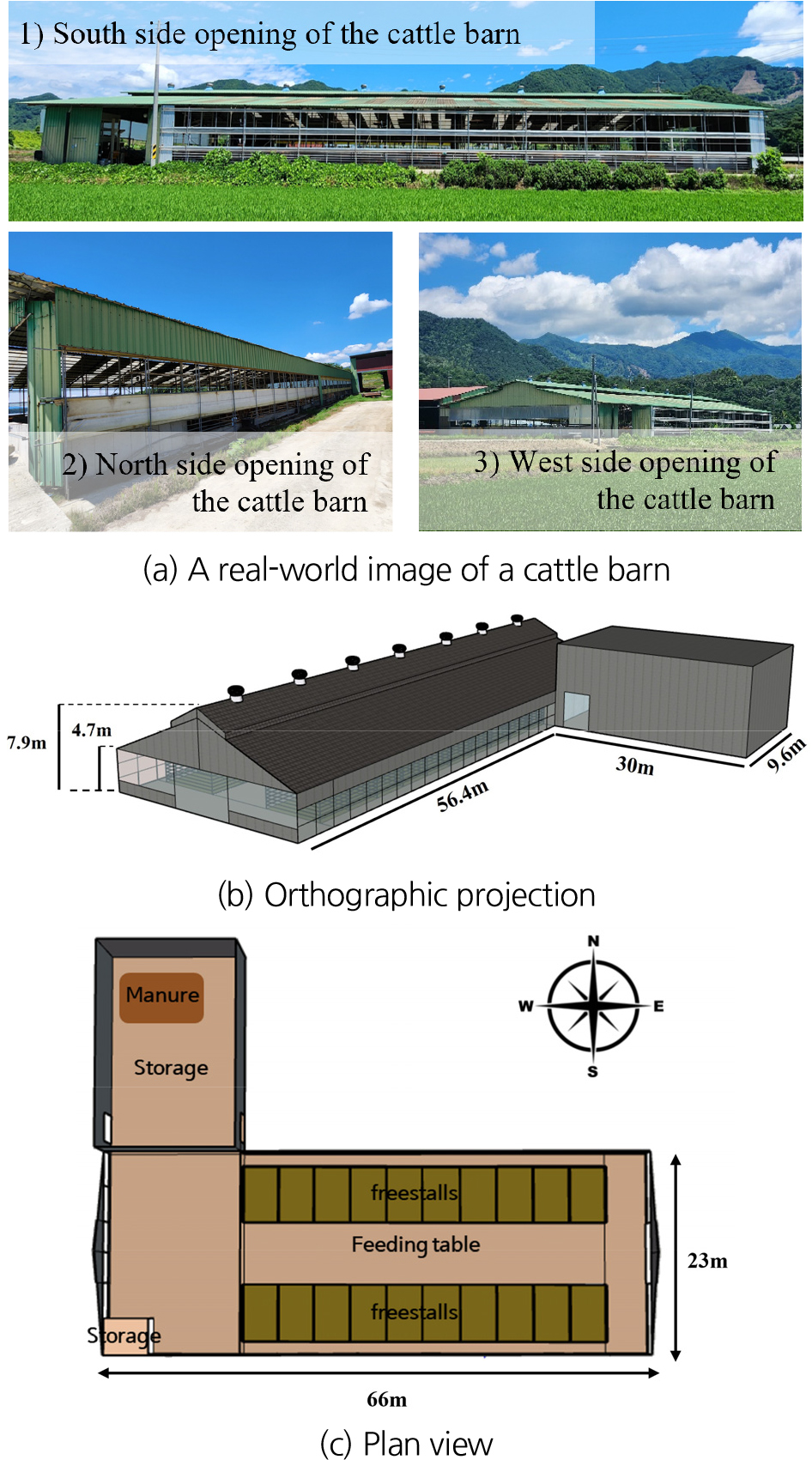
-
CFD-based optimization of sensor placement for accurate ventilation rate assessment in naturally ventilated cattle barns
자연환기식 우사의 환기량 산정을 위한 전산유체역학 시뮬레이션 기반 풍속 측정 위치 최적화
-
Ji-yeon Park, Chae-rin Lee, Se-yeon Lee, Kehinde Favour Daniel, Jinseon Park, Se-woon Hong, Jun-Yeob Lee, Junsu Park
박지연, 이채린, 이세연, DanielKehinde Favour, 박진선, 홍세운, 이준엽, 박준수
- This study aimed to improve the accuracy of ventilation rate estimation in a naturally ventilated (NV) cattle barn using computational fluid dynamics …
- This study aimed to improve the accuracy of ventilation rate estimation in a naturally ventilated (NV) cattle barn using computational fluid dynamics (CFD) simulations. A CFD model was developed based on an actual NV barn and validated using field measurements. The validated CFD model was used to evaluate the airflow characteristics in standard cattle barns with 90, 130, and 180 cows, as proposed by the Ministry of Agriculture, Food and Rural Affairs. The effects of anemometer location and number on ventilation rate estimation accuracy were analyzed. Simulation results showed that estimation errors decreased with an increasing number of sensors. In single-row array of sensors, eight sensors provided the highest accuracy, whereas four sensors were sufficient in double-row layouts. For entry/exit openings, installing only two sensors maintained estimation errors below 1%. These findings suggest that CFD-based sensor placement strategies can contribute to reliable ventilation rate assessment, providing a foundation for emission factor recalculation and enhanced environmental control in livestock facilities. - COLLAPSE
-
CFD-based optimization of sensor placement for accurate ventilation rate assessment in naturally ventilated cattle barns
-
Research article
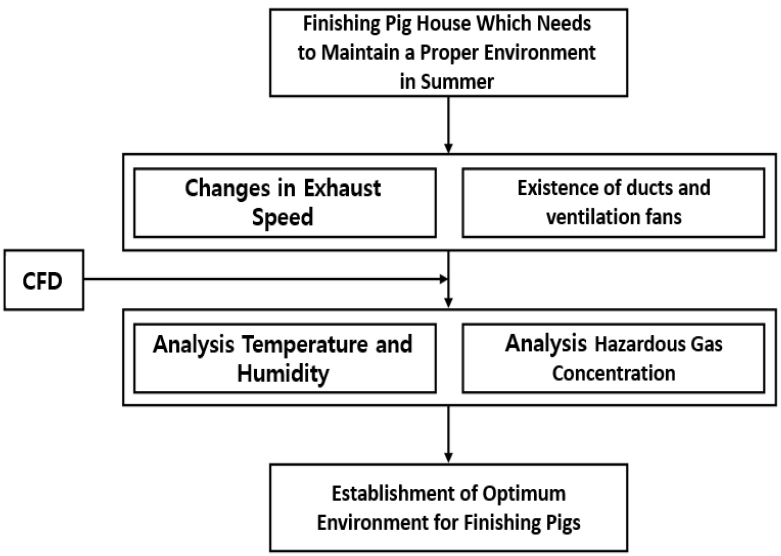
-
Analysis of optimal ventilation rate for cooling in summer season for pig houses with forced ventilation
강제환기식 돈사의 하절기 냉방시 최적 환기량 분석
-
Kyoung-Min Kim, Useung Ko, Do-Kyeong Kim, Eun-Hyeok Jang, Ji-Woo Han, In-Bok Lee
김경민, 고우승, 김도경, 장은혁, 한지우, 이인복
- This study aimed to determine the optimal ventilation rate for mechanically ventilated pig houses in summer to enhance heat exchanger efficiency and …
- This study aimed to determine the optimal ventilation rate for mechanically ventilated pig houses in summer to enhance heat exchanger efficiency and improve the livestock environment. Using Computational Fluid Dynamics (CFD) simulations, the study analyzed airflow patterns and calculated the effective temperature (ET) under various ventilation conditions. The results revealed that a 60% ventilation rate provided the optimal balance between reducing ambient temperatures and maintaining ammonia levels within acceptable limits. Furthermore, temperature uniformity and ammonia distribution indicated areas requiring improved airflow management. This research underscores the necessity of integrated cooling and ventilation systems in pig houses during summer, offering insights to enhance productivity and animal welfare in livestock operations. - COLLAPSE
-
Analysis of optimal ventilation rate for cooling in summer season for pig houses with forced ventilation
-
Research article
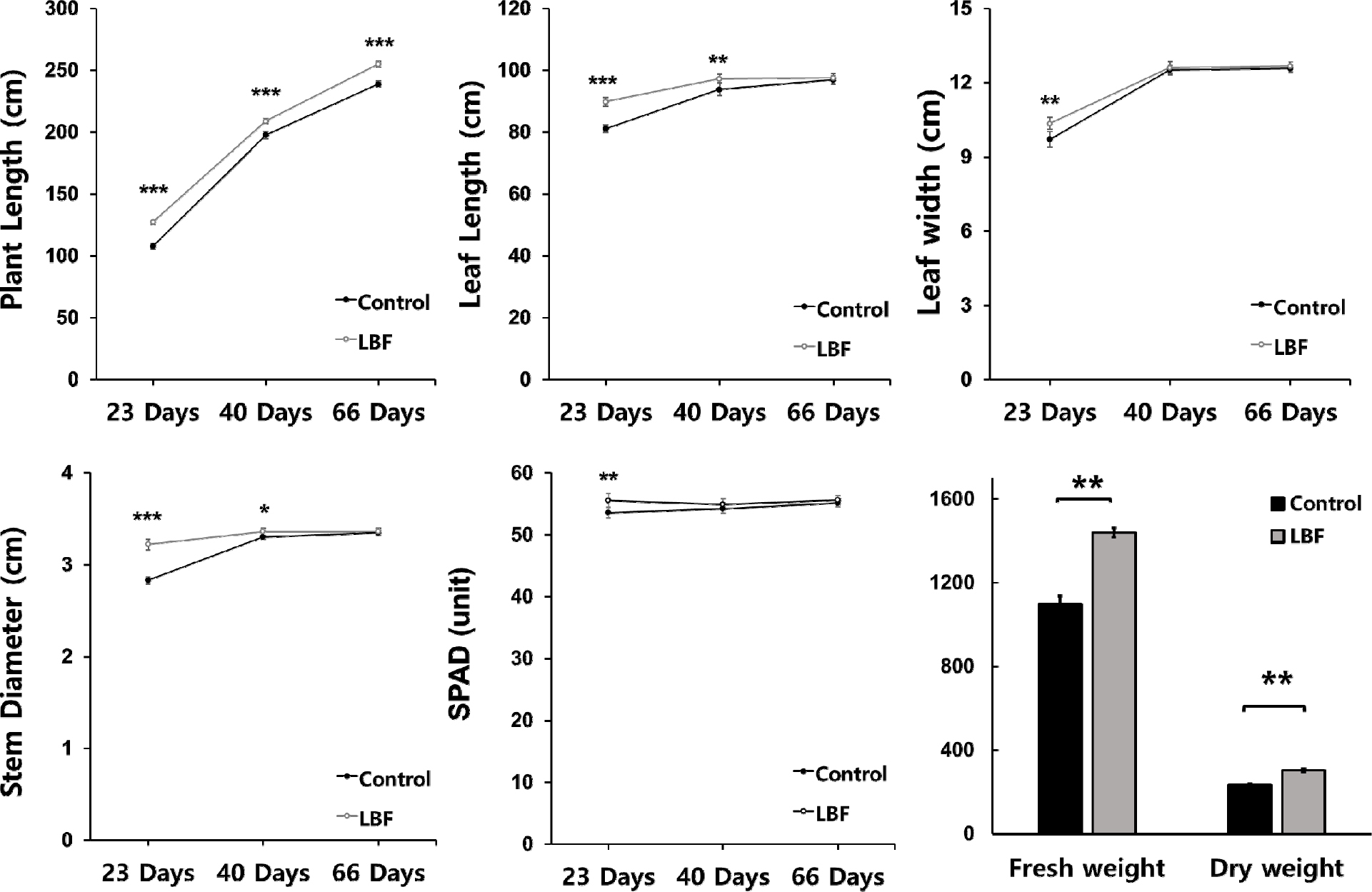
-
Effects of chlorella-based liquid bio-fertilizer on growth, forage quality, antioxidant activity, and soil chemical properties of forage corn (Zea mays L.)
클로렐라 기반 액상 바이오비료가 사료용 옥수수의 생육, 사료 품질, 항산화 활성 및 토양 화학성에 미치는 영향
-
Tran Yen Linh Le, JunKyung Lee, Su-Yeon Shim, Sung-Ha Hong, Jiwon Jung, Myung-Gyu Lee, Sun-Goo Hwang
레쪈옌린, 이준경, 심수연, 홍성하, 정지원, 이명규, 황선구
- This study evaluated the effects of a Chlorella-based liquid bio-fertilizer (LBF) on the growth, forage quality, antioxidant capacity, and soil chemical properties …
- This study evaluated the effects of a Chlorella-based liquid bio-fertilizer (LBF) on the growth, forage quality, antioxidant capacity, and soil chemical properties of forage corn. Regarding plant growth, the shoot length of LBF-treated corn increased from 107.47 cm to 126.98 cm at 23 days after sowing, representing an 18.2% increase. Similar improvements were observed at 40 days and 66 days. The crude fiber content significantly decreased from 23.23% in the control group to 20.58% in the LBF-treated group, indicating improved digestibility. Antioxidant activity was also significantly enhanced. In LBF-treated plants, total polyphenol content increased from 3.42 mg GAE/mL to 4.15 mg GAE/mL, and total flavonoid content increased from 7.82 mg QE/mL to 9.22 mg QE/mL. DPPH radical scavenging activity showed a highly significant increase, and ABTS activity was also significantly improved. Soil chemical properties were notably improved following LBF application. Soil pH increased from 5.70 to 6.25, organic matter content rose from 4.30% to 5.50%, and total nitrogen content increased from 2,230.41 mg/kg to 2,656.88 mg/kg. Additionally, available phosphorus increased from 994.68 mg/kg to 1,234.19 mg/kg, and the cation exchange capacity (CEC) improved from 16.07 cmol+/kg to 17.23 cmol+/kg. Overall, these findings suggest that LBF application can promote early-stage growth, improve forage quality by reducing fiber content, enhance antioxidant capacity, and improve soil fertility, thereby supporting more sustainable crop production. - COLLAPSE
-
Effects of chlorella-based liquid bio-fertilizer on growth, forage quality, antioxidant activity, and soil chemical properties of forage corn (Zea mays L.)
-
Research article
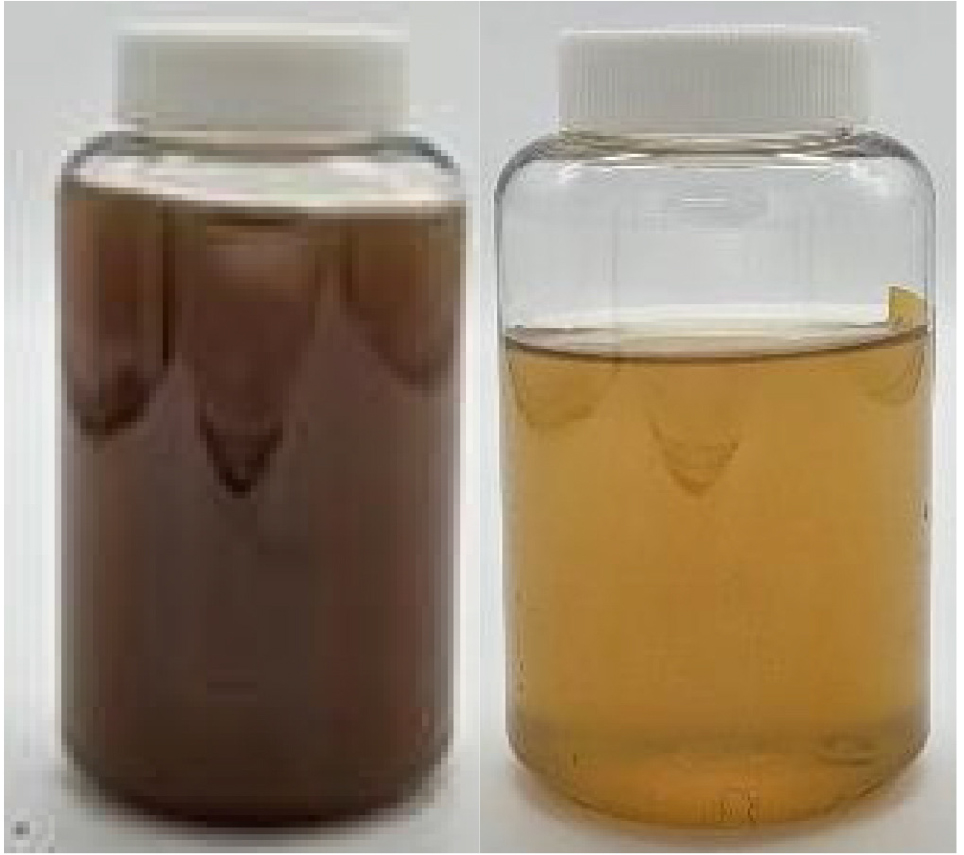
-
Study on the changes in fertilizer components and germination index following concentration of filtered liquid fertilizer derived from swine manure
양돈분뇨 여과액비 농축에 따른 비료성분 및 발아지수 변화 특성 연구
-
Ji-won Jung, Seung-Hyun Park, Soo-Ryang Kim, EDWIN SUNG HO JU, Sung-Ha Hong, Myung-Gyu Lee
정지원, 박승현, 김수량, JUEDWIN SUNG HO, 홍성하, 이명규
- This study aimed to evaluate changes in fertilizer component concentrations and biological safety by applying a rotary vacuum evaporation process to filtered …
- This study aimed to evaluate changes in fertilizer component concentrations and biological safety by applying a rotary vacuum evaporation process to filtered liquid fertilizer derived from swine manure. The primary objective was to promote the wide-area distribution of liquid fertilizer produced in nutrient-surplus regions by reducing its volume, with the assumption that the concentrate would be appropriately diluted for crop cultivation at the destination. The filtered liquid fertilizer was concentrated to 2×, 3×, and 4× levels. As the concentration ratio increased, the concentrations of nitrogen (N), phosphorus (P), and potassium (K) rose significantly. Phosphorus and potassium exhibited stable recovery rates above 88%, whereas nitrogen showed a decreasing recovery rate — 76.33% at 2×, 67.95% at 3×, and 60.42% at 4× — suggesting volatilization losses during the concentration process. The germination index (GI) decreased with increasing concentration, indicating higher biological toxicity. However, following 50% and 100% dilution treatments, the GI values recovered to above 70% across all concentration levels, confirming that dilution effectively mitigated toxicity. These findings suggest that post-concentration dilution is essential to ensure the safe agricultural application of concentrated filtered liquid fertilizer. Furthermore, this study provides foundational insights into optimizing the concentration process to minimize nitrogen losses and enhance biological safety, thereby supporting the sustainable utilization of concentrated liquid fertilizers in agriculture. - COLLAPSE
-
Study on the changes in fertilizer components and germination index following concentration of filtered liquid fertilizer derived from swine manure
Journal Informaiton
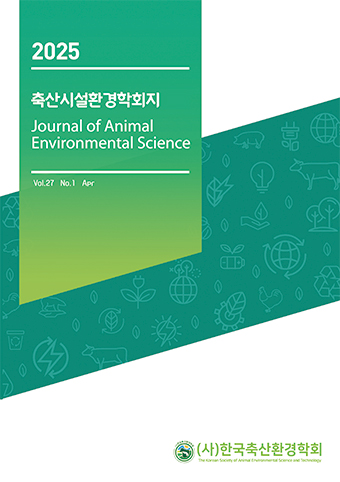 Journal of Animal Environmental Science
Journal of Animal Environmental Science
Journal Informaiton
Journal Informaiton - close
 Journal of Animal Environmental Science
Journal of Animal Environmental Science
